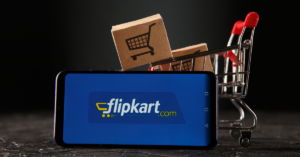There’s no linear path to disrupting an entire industry. If anyone could do it, everyone would. There may not be a map to take an organization from startup to market leader through innovation and disruption, but there are some guidelines that can help you chart your own course.
1. Target the Right Industry
An industry ripe for disruption is usually one that’s been resistant to change for some time now. They may have several players who believe their own market dominance is a high enough barrier to disruption that they don’t need to worry.
Toronto-based startup Nobul found the ideal target in the real estate industry. Nobul offers the world’s first and only digital marketplace where real estate agents compete for customers. It’s up-ended the way real estate agents work by giving consumers more information.
According to founder Regan McGee, Nobul is alleviating home buyer and seller pain points by giving consumers more information about their options. In an interview with Yahoo Finance, McGee explains that “Because it’s a competitive environment, there’s downward pressure on fees. This is leveling the playing field for the first time ever. This isn’t a small pain point.”
2. Find Your Strategy
There’s more than one strategy for turning an industry on its head. There are many different disruption models that could apply to your industry, including:
- Creating lower-cost business models to challenge incumbents
- Applying premium/freemium models
- Offering superior, higher-cost options with a bright idea that creates new value
- Disrupting customer experience, empowering customers in industries that have traditionally hoarded power among service providers
There is no right or wrong answer. It depends on the context of your industry, the technology at your disposal, and the weaknesses you can identify.
3. Cultivate Human Capabilities
Your organization is only as good as its human capabilities. If you’re trying to shake up an industry through innovation, you need to invest in the talent and resources that create the conditions for meaningful innovation.
Disruption is more than just technology. It also requires imagination, deep knowledge of the industry, and creativity to apply that technology to solve unique and intractable problems.
4. Lean into Your Leanness
When your organization is still a startup, you can operate with a speed and flexibility that incumbent competitors can rarely respond to. You’re faster at identifying customer needs and finding better market fits. Lean into that advantage as you carve out your place in the market.
5. Develop Sustainable Disruption
Disruption can put your company in a market-leading position, but holding onto that position is another proposition. It’s not long before technological innovation is followed by imitators, and given the rapid pace of technology today, another shift could be just around the corner. Sustainable disruption means investing in organizational capabilities and innovative initiatives.
One of the best examples of a company that has mastered both disruption and innovation is Apple. Apple overturned the mobile market with the iPhone, but it has continued to disrupt itself by launching products and then releasing improved iterations on an annual basis. More transformative products such as the iPad and Apple Watch have seen their launches spread out further.










